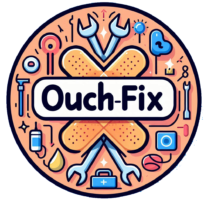Mindfulness is everywhere these days, and for good reason. From reducing stress to improving focus, this simple yet powerful practice is transforming lives. But beyond boosting mental clarity, mindfulness can also play a vital role in managing chronic pain.
If you’ve ever struggled with persistent pain, you know how much it can affect every part of your life—from your mood and energy levels to your relationships and work. Mindfulness offers a way to change how your brain perceives pain and regain control over your body and mind.
What Is Mindfulness?
Jon Kabat-Zinn, a pioneer in mindfulness research, defines mindfulness as “awareness that arises through paying attention, on purpose, in the present moment, nonjudgmentally.”

In simpler terms, mindfulness is about being fully present—observing your thoughts, emotions, and sensations without judgment or overthinking. Instead of fighting pain or worrying about the future, mindfulness teaches you to experience the moment as it is, which can reduce stress and emotional suffering.
Mindfulness and Chronic Pain
Chronic pain is a reality for millions of people. According to the CDC, roughly 50 million adults in the U.S. experience pain lasting longer than three months. Common types include:
- Lower back pain
- Migraines
- Neck pain
- Facial pain
But chronic pain is more than a physical symptom—it affects your mental health, mobility, relationships, and overall quality of life. Many people with chronic pain also struggle with anxiety, depression, or stress, creating a cycle that makes managing pain even more challenging.
Mindfulness offers a way to break this cycle. Research shows that mindfulness can help you focus on the present moment rather than dwelling on discomfort or negative thoughts. Over time, this shift can reduce both the intensity of pain and the emotional burden it brings.

Also Read: How do I Choose an Ergonomic Chair for Lower Back Support?
How Mindfulness Helps with Pain Management
Studies in neuroscience reveal that mindfulness doesn’t just make you feel better—it actually changes how your brain processes pain.

In a 2015 study, Fadel Zeidan, Ph.D., and his team found that participants practicing mindfulness had reduced activity in brain regions associated with pain perception. Remarkably, some participants were able to reduce or even stop using pain medication simply by incorporating mindfulness into their daily routine.
Mindfulness exercises encourage you to:
- Observe sensations without labeling them as “good” or “bad”
- Shift focus from pain to other present-moment experiences
- Relax your muscles and calm your nervous system
By consistently practicing mindfulness, many people report reduced stress, lower anxiety levels, and even improved sleep—all of which contribute to lessening chronic pain.
Getting Started with Mindfulness
Starting mindfulness doesn’t require special skills or expensive classes. Here are some beginner-friendly approaches:

1. Apps & Online Resources
- Headspace and Calm offer guided meditations specifically for pain management.
- YouTube has free mindfulness and body-scan exercises.
- Mayo Clinic Connect provides resources and tips for mindful pain relief.
2. Books & Audio Programs
- Full Catastrophe Living by Jon Kabat-Zinn is a classic.
- Mindfulness CDs and audiobooks provide structured practices you can follow at home.
3. Local Workshops & Groups
- Many communities offer mindfulness retreats, therapy groups, or workshops. Practicing in a group can provide extra motivation and support.
4. Simple Daily Practices
Even short, daily exercises can make a difference:
- Body Scan Meditation: Focus on different parts of your body, noticing sensations without judgment.
- Mindful Breathing: Pay attention to each inhale and exhale, letting tension melt away.
- Mindful Walking: Notice how your feet feel against the ground and the rhythm of your steps.

Also Read: What is the Best Over‑the‑Counter Pain Relief Cream for Joint Pain?
Give Mindfulness a Try
With so many resources available, getting started with mindfulness is easier than ever. If you’re living with chronic pain, mindfulness might be a powerful tool to help you manage it. Why not give it a try?
Conclusion
Mindfulness is more than a trendy buzzword—it’s a scientifically backed approach to managing chronic pain and enhancing overall well-being. By practicing mindfulness daily, you can reduce stress, improve focus, and change the way your brain perceives pain.
If you live with chronic pain, start small. Even a few minutes a day can make a meaningful difference. Your mind and body will thank you.
Take the First Step Today: Try a guided mindfulness meditation or body scan tonight, and notice how your body and mind respond.
Q1. Can mindfulness completely eliminate chronic pain?
Mindfulness may not remove pain entirely, but it can reduce its intensity and improve coping strategies.
Q2. How long does it take to see results?
Many people notice improvements within a few weeks of consistent practice, though results vary.
Q3. Do I need a coach to practice mindfulness?
No—guided apps, books, and online resources are effective for beginners. However, a coach can accelerate progress and offer personalized guidance.
Q4. Can children practice mindfulness for pain?
Yes! Mindfulness can help children manage stress, anxiety, and even minor physical discomfort.
Q5. Is mindfulness a replacement for medical treatment?
Mindfulness complements medical care—it’s not a replacement for prescribed treatments or therapies.
 Skip to content
Skip to content




